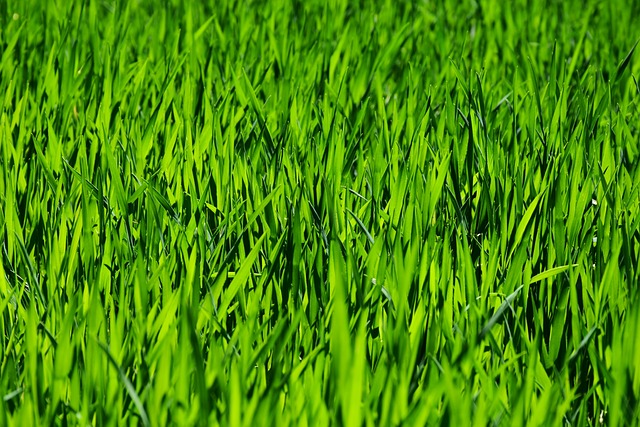Lawn care and landscaping are central to maintaining a healthy, attractive outdoor space that supports ecological balance. Key practices include mowing at optimal heights for different grass types, strategic watering tailored to local climate and soil conditions, aeration to prevent soil compaction, precise fertilization to encourage healthy grass growth without promoting weeds, and pest management to protect against lawn-damaging insects and pests. Overseeding helps rejuvenate thin or bare patches, while integrating organic practices like compost use and eco-friendly pest control bolsters soil health and promotes sustainability. Garden bed mulching aids in weed suppression, moisture conservation, and soil enrichment. Including plants and trees for natural shade or windbreak can reduce turf stress and contribute to resilience. Effective lawn care requires understanding soil composition and pH levels, amending soil as necessary, and implementing advanced irrigation systems that conserve water, distribute it efficiently, and promote robust root systems—all of which contribute to a vibrant landscape that is both visually pleasing and ecologically sound.
Embarking on a landscaping project transforms your outdoor space into an extension of your home, blending functionality with aesthetic appeal. This article delves into the art and science of lawn care and landscaping design, offering insights into maintaining a thriving landscape and creating a harmonious outdoor environment. From essential elements of lawn care to the strategic implementation of sustainable practices, each section provides valuable guidance for both seasoned gardeners and beginners alike. Discover how to prepare your soil for optimal plant growth, select the best irrigation systems to keep your lawn lush, and execute effective maintenance strategies throughout the year. Learn about organic methods to manage pests and diseases, and understand the benefits of aeration and overseeding. Additionally, explore principles of landscaping architecture that will help you design a space that is both beautiful and functional, incorporating native plants, water features, and strategic lighting. Finally, find out how to turn your vision into reality with practical tips on planning, choosing professionals, and integrating technology for a landscape that stands the test of time. With these strategies in hand, you’re well on your way to achieving a lawn and garden that is both a sanctuary and a source of pride.
- Essential Elements of Lawn Care for a Thriving Landscape
- 1. Soil Preparation and Testing for Optimal Plant Growth
- 2. Effective Irrigation Systems to Maintain a Lush Lawn
Essential Elements of Lawn Care for a Thriving Landscape

Lawn care is a fundamental aspect of maintaining a healthy and vibrant landscape. A well-tended lawn serves as the cornerstone of any effective landscaping design, contributing to both the aesthetic appeal and ecological balance of an outdoor space. Regular mowing at the appropriate height for the grass type ensures a neat appearance while preventing weeds from overgrowing. Consistent watering, tailored to local weather conditions and soil types, keeps the grass hydrated and promotes root growth. Aeration, which allows air, water, and nutrients to penetrate the soil, is crucial for preventing compaction and enhancing soil health. Fertilization should be strategic, using the right type and amount of nutrients to support grass growth without promoting weed proliferation. Pest control measures are necessary to safeguard the lawn from insects and pests that can cause damage. Lastly, overseeding areas where grass is thin or has died can help in rejuvenating the lawn and filling in bare spots before they become problematic. Implementing these elements of lawn care as part of a consistent landscaping routine not only creates a visually pleasing environment but also supports the longevity and health of your landscape.
Integrating organic practices into lawn care, such as composting and using natural pest deterrents, can further enrich the soil and create a more sustainable landscape. Mulching around garden beds not only reduces weed growth but also conserves moisture and improves soil quality. The strategic placement of plants and trees for shade or windbreak can also complement the lawn by reducing stress on the turf and creating a diverse and resilient outdoor ecosystem. By understanding and adhering to these essential elements of lawn care, homeowners and landscapers alike can cultivate a thriving landscape that is both beautiful and sustainable.
1. Soil Preparation and Testing for Optimal Plant Growth

Embarking on a landscaping project begins with the foundational aspect of soil preparation and testing. A robust lawn care regimen hinges on understanding the soil’s composition, as it directly influences plant growth and health. Soil testing is pivotal; it provides valuable insights into nutrient levels, soil pH, and texture, which are critical for determining the right amendments to ensure a fertile ground for plants. Adjusting the soil’s pH balance and incorporating organic matter can significantly enhance its structure, water retention capabilities, and nutrient availability, leading to a thriving landscape. Landscapers employ various methods to optimize soil conditions, such as tilling, aerating, or adding compost, which not only supports plant growth but also fosters root development and resilience against environmental stressors. This meticulous approach to soil preparation lays the groundwork for a successful landscaping design that can endure and flourish over time, ensuring a vibrant outdoor space that stands the test of time.
2. Effective Irrigation Systems to Maintain a Lush Lawn

Lawn care and landscaping professionals often emphasize the importance of an effective irrigation system to maintain a lush, vibrant lawn. A well-designed irrigation system not only conserves water but also ensures that each part of the lawn receives the optimal amount of hydration. Drip irrigation and sprinkler systems are popular choices due to their efficiency and precision. Drip irrigation delivers water directly to the soil, minimizing evaporation and promoting deep root growth. On the other hand, sprinkler systems can be tailored to cover different areas of the lawn with varying moisture needs, simulating natural rainfall patterns. Both methods contribute to a healthier lawn by reducing runoff and overwatering, which can lead to water waste and nutrient leaching. When selecting an irrigation system, it’s crucial to consider factors such as soil type, local climate conditions, and the specific needs of the grass varieties present in the landscape. By investing in a robust irrigation solution as part of your lawn care routine, you can achieve a lush, green lawn that is both aesthetically pleasing and environmentally responsible.
Landscaping design and implementation play a pivotal role in enhancing the aesthetic appeal and ecological balance of any outdoor space. A thriving landscape begins with attentive lawn care, which includes critical steps like soil preparation and testing to support optimal plant growth. Complementing this with advanced irrigation systems ensures a consistently lush lawn. By integrating these elements thoughtfully, homeowners can achieve a harmonious and sustainable environment that not only elevates their property’s curb appeal but also fosters biodiversity and resilience against climate challenges. Consequently, the art of landscaping, combined with meticulous lawn care practices, becomes a cornerstone for outdoor spaces that are both beautiful and beneficial.
